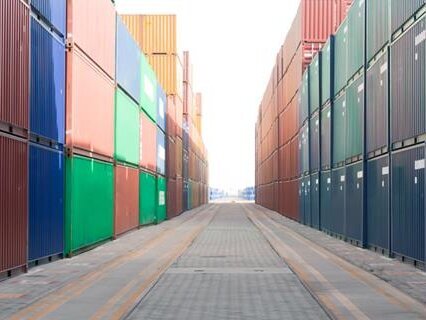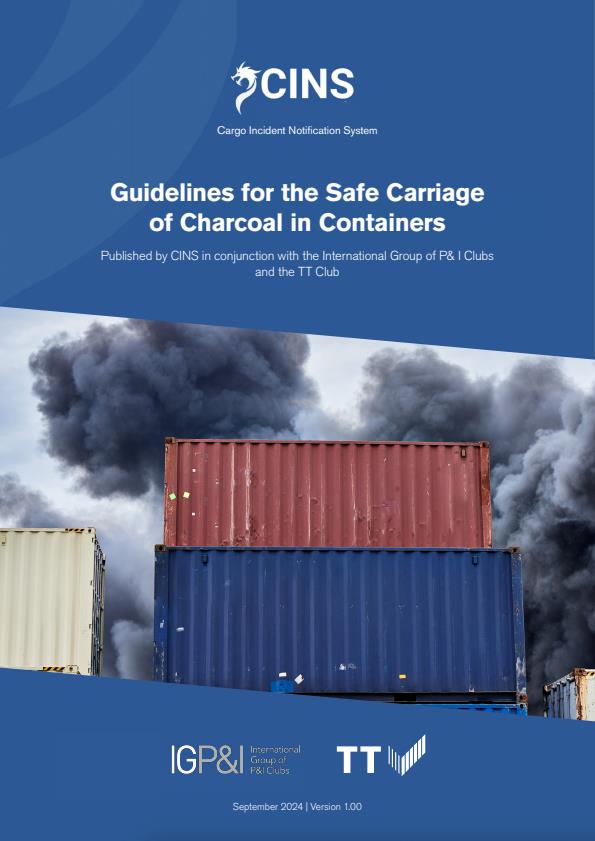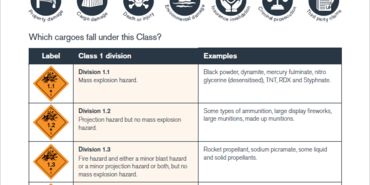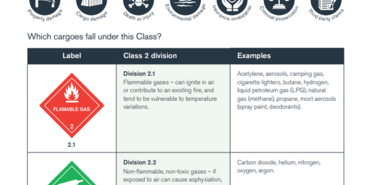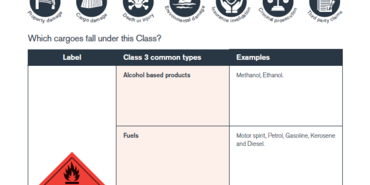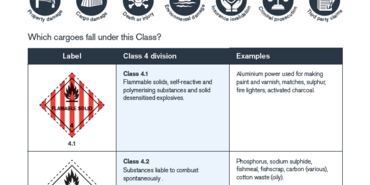Guidance for the safe carriage of charcoal in containers | 2024
The Cargo Incident Notification System (CINS), in partnership with the International Group of P&I Clubs and TT Club, has published comprehensive guidelines addressing the critical safety challenges of transporting charcoal in containers. These guidelines supersede all previous charcoal guidance and respond to at least 68 fire incidents recorded between 2015 and 2022, most involving misdeclared consignments.
Charcoal, correctly classified as UN 1361 CARBON animal or vegetable origin, presents significant self-heating risks that can lead to spontaneous combustion during transport. The material's oxidation process produces heat, and when combined with its insulating properties, creates dangerous conditions that have resulted in numerous container fires at sea. For transport & logistics operators cover, understanding these risks is essential for implementing appropriate safety measures.
Critical safety requirements
The guidelines mandate that all charcoal must be treated as dangerous goods under the IMDG Code, regardless of any exemption tests. After production, unpacked charcoal must undergo weathering for minimum 14 days before packaging, stored under cover but in open air. Temperature monitoring is crucial—material temperature must not exceed 40°C on packaging day, with thermal cameras recommended for verification.
Container packing follows strict protocols: maximum 30kg per bag (though 50kg is permitted), maintaining 30cm headspace in containers, and implementing specific stowage patterns to prevent heat accumulation. Cargo handling facilities cover becomes particularly relevant as proper vanning surveys and independent inspections are strongly recommended before transport.
Documentation requirements include production dates, packaging dates, temperature records, and comprehensive weathering reports. The guidelines emphasise accessible on-deck stowage protected from direct sunlight, exceeding standard IMDG requirements. Effective cargo screening and 'know your customer' procedures are essential, particularly given charcoal's various trade names including bamboo charcoal, carbon briquettes, and shisha tablets. For comprehensive claims management & digital services, proper documentation proves invaluable when incidents occur.
Key takeaways
- Charcoal must always be declared as dangerous goods (UN 1361) regardless of exemption tests
- Mandatory 14-day weathering period required before packaging
- Maximum temperature of 40°C permitted on packaging day
- 30cm minimum headspace required in containers
- On-deck stowage strongly recommended over under-deck placement
- Vanning surveys and thermal imaging advised for safety verification
- Documentation must include production dates, packaging dates, and temperature records
Frequently asked questions
What is the main hazard when transporting charcoal in containers?
Charcoal is a self-heating substance that can spontaneously combust through oxidation, particularly when exposed to moisture or inadequate ventilation, causing container fires during transport.
How long must charcoal be weathered before container packing?
Unpacked charcoal must undergo weathering for a minimum 14 days after production, stored under cover but in open air, before being packaged for transport.
What documentation is required for charcoal shipments?
Required documentation includes production date, packaging date, material temperature on packaging day, weathering reports, and proper dangerous goods declaration as UN 1361.
Documents
TT Club CINS Charcoal Guidance (2.24 MB) 11/09/2024
- Author
- Staff Author
- Date
- 03/10/2024
